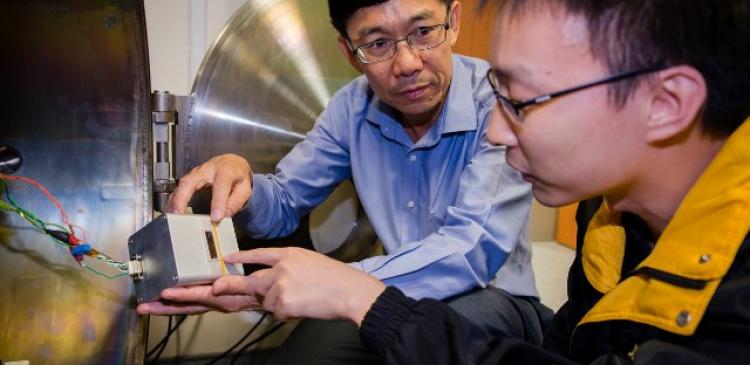NTU Assoc Prof Low Kay Soon (centre) holding the prototype of the AOBA VELOX-III microthruster with his researchers, Tran Quang Vinh (right) holding two pieces of Teflon used as thruster fuel and Kang Bingyin (left) holding their custom-designed circuitry. To the right is the custom-built vacuum test chamber with the actual VELOX-III microthruster which will be launching to space next year.
Singapore’s newest satellite will be the result of a new Singapore-Japan partnership.
Nanyang Technological University (NTU Singapore) is partnering Kyushu Institute of Technology (Kyutech), which has one of Japan’s most established university space engineering programmes, to build and launch a new satellite.
Named AOBA VELOX-III, the new nanosatellite weighing two kilogrammes will be launched by Japan's national agency, the Japan Aerospace Exploration Agency (JAXA) in 2016.
The satellite will be launched to the International Space Station, the 110 metre habitable human-made satellite that orbits Earth, for a subsequent injection into its orbit 400 kilometres above sea level.
This joint satellite development programme, the first such partnership between universities from both countries, was announced today (13 Jul) at a press conference held at Kyutech in Japan.
Please contact Lestor Kok, [email protected] or +65 97415593 for more information.





